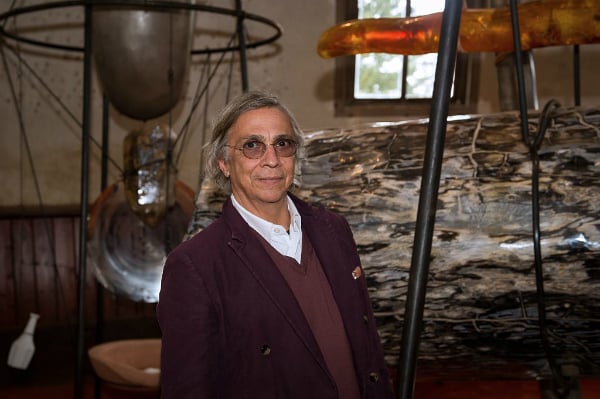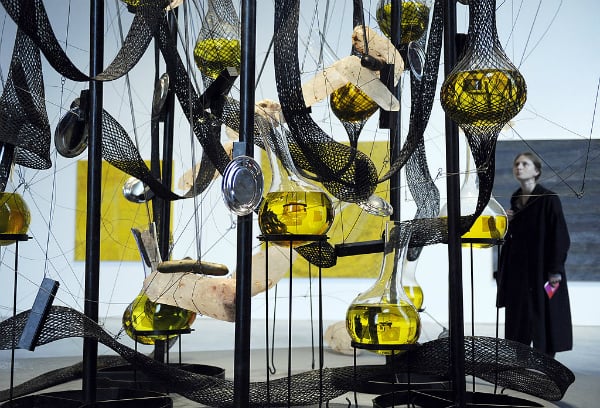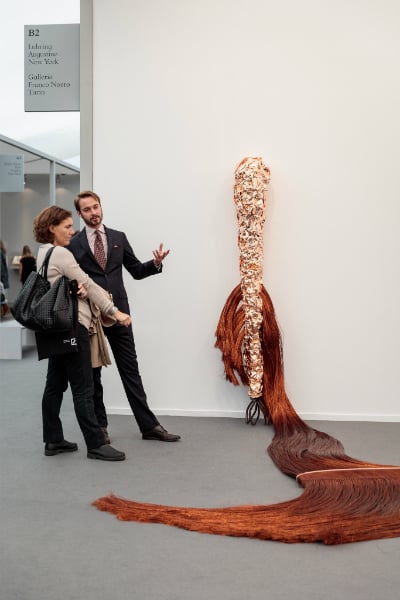People
Brazilian Artist Tunga Dies at 64
He was one of the most influential Brazilian artists of his generation.

He was one of the most influential Brazilian artists of his generation.

Lorena Muñoz-Alonso

The renowned Brazilian artist Tunga died yesterday afternoon at the age of 64 of cancer. According to the Brazilian newspaper O Globo, the artist had been admitted to the Samaritano hospital in Rio de Janeiro on May 12.
Tunga was one of the leading Brazilian artists of his generation, best known for his daring, elaborate, and surrealist-tinged sculptures, installations, videos, and performances that dealt with subjects like desire, enigma, and rituals.
Born Antônio José de Barros de Carvalho e Melo Mourão in 1952 in the city of Palmares, Tunga was the son of the poet and journalist Gerardo Melo Mourão and the social activist Léa Barros. Tunga, like many other artists, trained as an architect but decided to pursue an artistic practice instead, although spatial concerns remained at the core of his work.
In 1974, at the tender age of 22, he had his first solo show, titled “Museu da Masturbação Infantil” (Museum of Childhood Masturbation), at the Museum of Modern Art in Rio de Janeiro. The subversive and psychologically loaded exhibition of drawings already displayed essential aspects of the oeuvre that he would continue developing over the next four decades.

A Russian patron looks at the contemporary art piece Cooking Crystal by Tunga at a gallery in Moscow on September 25, 2009. Photo Natalia Kolesnikova via Getty Images.
“I place myself in the poet’s role, because I think that poetry is not only something written, spoken, or sung. I refer to what is behind poetry, and that’s text in any shape, in any language,” he was quoted as saying by Maria do Carmo M.P. de Pontes in a 2012 feature on the artist published in the magazine Art Review.
Bodily organs and functions, and other organic matter, were some of Tunga’s recurring motifs, which led him to his unique choice of materials that included bones and skulls, hair, nets, teeth, and viscous liquids among others.
His work forms part of the collections of important art institutions, including the Museum of Modern Art in New York, the Museum of Contemporary Art in Los Angeles, Museo Nacional Centro de Arte Reina Sofia in Madrid, and Stockholm’s Moderna Museet.
When in 2006, his monumental installation A la Lumiere des Deux Mondes was installed beneath the glass pyramid at the Musée du Louvre, Tunga became the first contemporary artist to have a work exhibited in the Parisian museum.

Brazilian artist Tunga poses in front of his sculpture A la lumiere des deux mondes displayed under the Louvre Museum’s pyramid in Paris, 28 September, 2005. Photo Thomas Coex via AFP/Getty Images.
Among many other shows in art institutions all over the world, Tunga participated in the 1995 and 2001 editions of the Venice Biennale, in the 1997 Documenta X, and in four São Paulo Biennials (1998, 1994, 1987, 1981). In 2007, his solo exhibition “Laminated Souls” occupied two floors at MoMA PS1 in New York.
https://instagram.com/p/83TYBSSYg6/
Tunga’s work was also one of the most photographed at the 2015 edition of Frieze London, where the reenactment of his 1984 performance Capillary Xiphopagus Between Us—showing two young girls conjoined like twins by their long manes of hair—fascinated and disturbed fair goers, and colonized Instagram feeds.
Meanwhile, at Frieze Masters 2015, the New York-based gallery Luhring Augustine and the Turin-based gallery Franco Noero shared a booth also dedicated to Tunga’s work.

Works by Tunga at the stand of Luhring Augustine and Franco Noero at Frieze Masters 2015. Photo Mark Blower, courtesy of Mark Blower/Frieze.